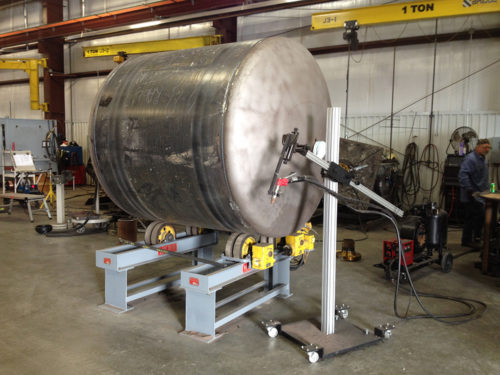
More companies are now shifting to automated welding to improve their operations. You may be considering to automate your welding operations for your business as well. But before you start automating your welding processes, it is best to know the types of welding automation and which is best for your business.
Automated welding helps you lessen manpower requirements, produce high-quality welds in a shorter time, regulate production schedule, and reduce the cost of parts being welded.
Automated welding is generally classified into two: fully automated and semi-automated welding.
FULLY-AUTOMATED WELDING
Fully-automated welding is mostly used for industries that undergo mass fabrication. This type of automated welding allows you to produce high-volume repetitive welding tasks.
In fully-automated welding, the machine does the entire welding operations, while the operator observes the whole welding process to make sure that the machines are working properly.
In addition, the latest technology today even gives fully-automated welding machines a touch of AI. Some machines today are not limited in a repetitive system of welding processes, but they can now learn how to rapidly adapt to the changing geometry of a seam while operating within unstructured environments.
SEMI-AUTOMATED WELDING
Semi-automated is the most common choice for welding operation, especially for smaller businesses. It requires a welding operator to manually start the work. This type of welding is intended to improve the welding operations of skilled operators without taking over their workload.
Semi-Automated welding involves tools that the welding operator should be using. Some of the tools include:
WELDING POSITIONERS
Welding positioners give the operator a comfortable position. This tool provides options for the metal to be tilted and turned 360 degrees, giving the welder the authority to set the angle according to his preferred position.This lessens fatigue and improves the quality of joints because the welder won’t have to adjust his position to hit the right spot.
WELDING ROTATORS
This tool takes care of cylindrical metals like barrels, LPG bullets, and tanks. Welding rotators are designed to keep in place and rotate heavy cylindrical metals horizontally in a consistent speed that is adjustable. Welding rotators make the job convenient because it lets the operator weld without putting much effort into making the cylindrical metal stay put.
WELDING MANIPULATORS
Welding manipulators assist the welders in holding the welding torch, helping them reach any place that needs welding. This would allow them to have more mobility, flexibility, and productivity. Welding manipulators also help welders with less experience to perform welding operations, allowing them to easily and safely adjust the height of the metal. This would enable the welder to concentrate more on the welding operations.
LOOKING FOR AN AUTOMATED WELDING SOLUTION PERFECT FOR YOUR OPERATIONS?
The cost of automated welding equipment may hinder businesses to automate their welding operations. But investing in automated welding is more practical in the long run because they won’t have to worry about labor costs, maintenance repairs, and production waste costs.
If you’re considering to automate your business’ welding operations, investing on a manipulator is the most ideal equipment to get you started.
Most welding manipulators are built for strength and durability. The portable ArcBoss Sub Arc Manual Unit remains stable with 50 pounds of weight on the fully-extended boom.
Start automating your business’ welding operations with ArcBoss!